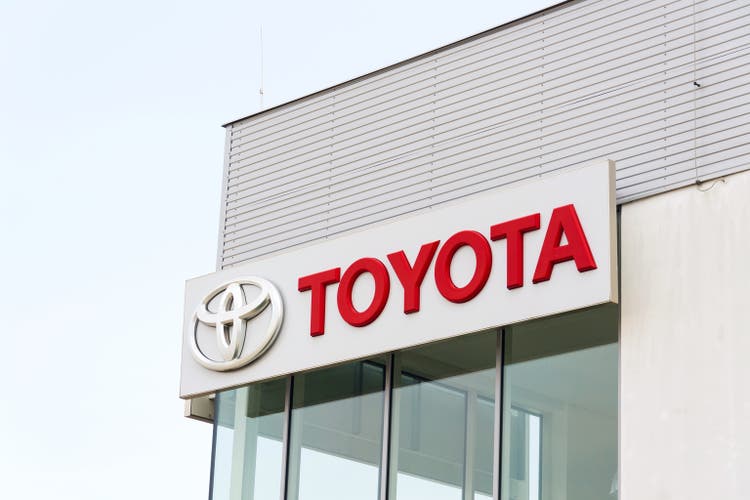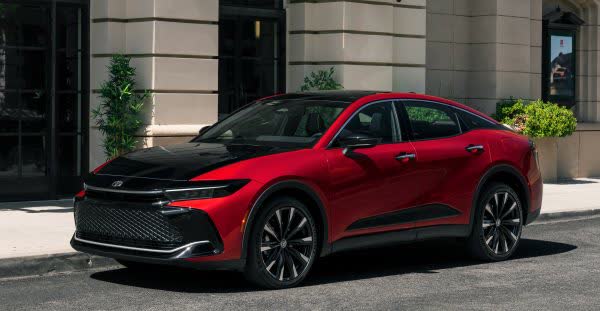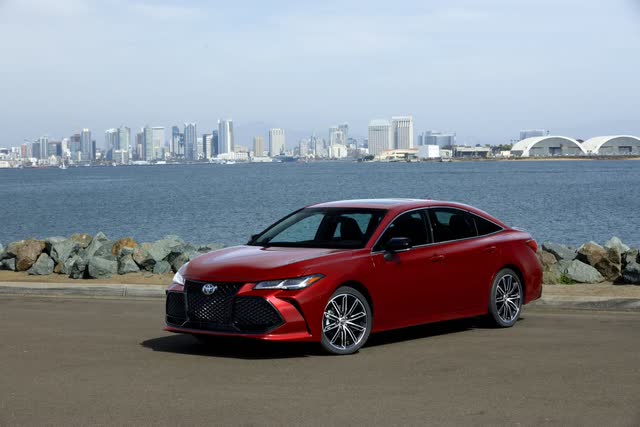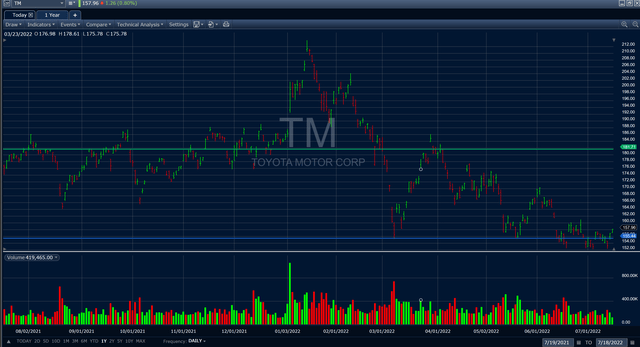Toyota motor corporation logo on dealership building josefkubes
Back in the 1950s, an obscure Japanese automaker introduced the brand name Crown and also decided to export its cars to the United States for the first time. In 1957, few in Detroit noticed Toyota opening shop in California and those that did probably chuckled at the tinny Toyopet Crowns the automaker was selling.
Much has happened since then, the laughter having died out years ago. Lately, Toyota Motor Corp. (NYSE:TM) has been enduring censure from the mass media and the environmental movement because it arguably is the world’s top producer of vehicles and yet stubbornly refuses to throw all its resources behind battery-powered electric vehicles (BEVs) as have rival Ford Motor Co. (F), General Motors Co. (GM) and others.
Electrify America
Instead, Toyota since introducing Prius in the late 1990s has focused its electrification resources behind energy-efficient gas-electric hybrid propulsion. The company contends that this strategy actually results in greater reduction of atmospheric carbon dioxide emissions than if the company devoted its limited battery resources toward BEVs.
The new all-wheel-drive Crown sedan, which will be sold globally, illustrates the point with two gas-electric hybrid system options, including an all-new Hybrid Max that combines a 2.4-liter Turbo gas engine with two electric motors that generate 340 horsepower, enabling the Platinum version of the model to achieve 0-60 mph in 5.9 seconds. Hybrid Max is rated at 28 miles per gallon.
2023 Toyota Crown, Platinum edition (Toyota Motor)
Two less costly versions of Crown are powered by a 2.5-liter engine, generating 236 hp. and linked to an electric motor, together rated at 38 miles per gallon. (The company so far hasn’t priced Crown, saying only that it will be priced “competitively.” Independent analysts estimate it will start at about $40,000 and sell for as much as $50,000 in its most luxurious version.)
Bye-bye Avalon
Coming to market with a new sedan, which will replace Toyota’s Avalon full-size sedan, is a bit counter-intuitive since the US and global automotive markets have been trending toward crossovers, SUVs and truck-like vehicles. But Toyota believes that a reasonable market remains for full-size sedans, especially since Ford, GM and other competitors have chosen to exit the sedan segment entirely, retiring one-time bestsellers like the Ford Fusion and Chevrolet Malibu.
But in designing the new Crown, Toyota engineers borrowed a page from crossover and SUV concepts by raising the seating position four inches compared with typical sedans like the smaller Toyota Camry. In doing so, entry and egress are made more comfortable while driver and passenger visibility is improved. Toyota designers benchmarked Nissan’s Maxima, Kia Stinger and Volvo’s S60 sedan as potential competitors to the new Crown.
Crown’s exterior may prove polarizing. Because of what Toyota calls Crown’s “elevated cabin,” designers also raised its roofline, triggering a fresh, modernistic visual language of body lines and shapes that will remind no one of the Avalon. One version features a two-tone color pattern with black paneling paired – in the example I saw – with red. This writer found the exterior attractive, though comments posted to press reports were mixed.
2022 Toyota Avalon, Touring edition (Toyota Motor)
The 16th generation Crown, which will arrive in the U.S. from Japan later this year, won’t make more than a marginal impact on the automaker’s U.S. operating results in terms of unit sales, at least not initially. An SUV and station wagon version of the new Crown will be sold in Japan. Akio Toyoda, the company’s president, announced in a livestream on Thursday that initial production will amount to 200,000 annually to be spread among all global markets. In 2021, Toyota manufactured just over 10 million passenger vehicles, a 9.4% increase from the year before. About 80% of its vehicles are sold outside of Japan.
Chip Dearth
Like other global automakers, Toyota continues to struggle with a worldwide production slowdown in its factories due to a shortage of components, principally – but not limited to – semiconductor chips. Company executives say they expect the chip shortage to continue through much of 2023, though they don’t have a precise view on when conditions will improve.
As of this writing, TM shares are trading close to the $155 support level and well below their $181 resistance level. They began the year at $212 and thus have fallen 25% from peak to the current trough, perhaps providing a favorable entry point.
TM 1-year stock price chart (Fidelity)
Given the supply chain snarls, rising interest rates and the increasing risk of recession, it’s fair to assume that the balance of 2022 and 2023 might prove challenging to Toyota from a financial standpoint. The automaker, according to Seeking Alpha’s Quant Ratings, stands a better-than-average chance of cutting its dividend.
So far, however, analysts remain divided on the automaker’s near-term prospects, in light of its competitive strength against peers, solid balance sheet and history of beating analyst forecasts and predictions. For a more cautionary viewpoint, look to a recent analysis based on financial fundamentals by Seeking Alpha contributor Ben Clarence.
For the long term, Toyota remains well positioned due to its balanced approach to electrification and its devotion to customer satisfaction and to innovation, embodied by the latest approach to sedan design. Will the new Crown prove to be surprise hit? Only time will tell – the key point is that Toyota continues to push boundaries and test concepts, often bringing to market an idea that draws customers and yields profit.
I continue to rate TM a buy, though the company’s near-term results could be less than stellar as global markets and consumer demand adjust to post-Covid monetary tightening. With Europe struggling to secure energy supplies in light of Ukraine’s conflict with Russia, awareness is growing of the long-term reliance on fossil fuels that all nations face and the insufficiency of wind, solar and other green energy resources to fuel economic growth.



Be the first to comment